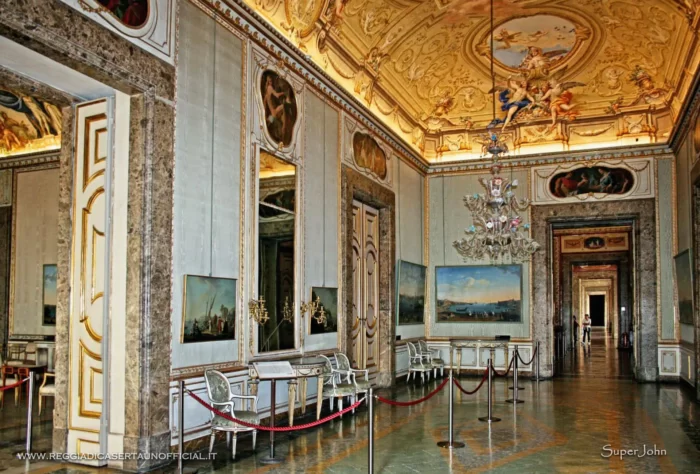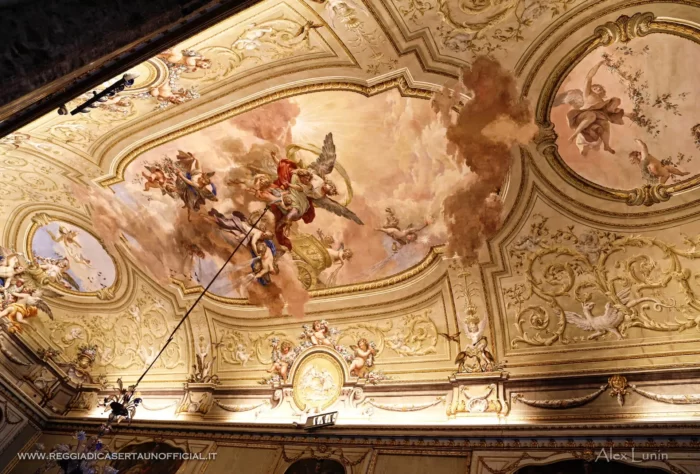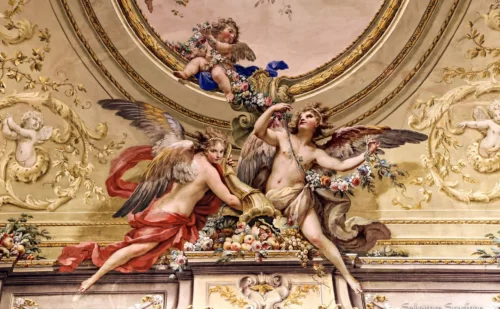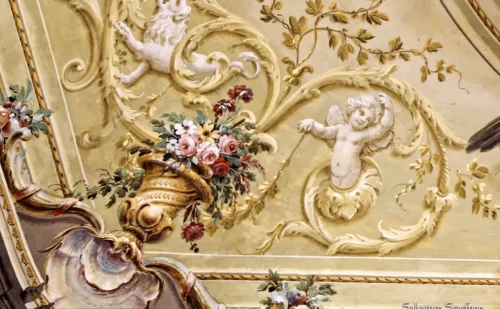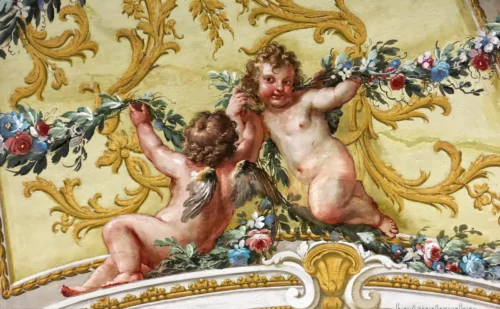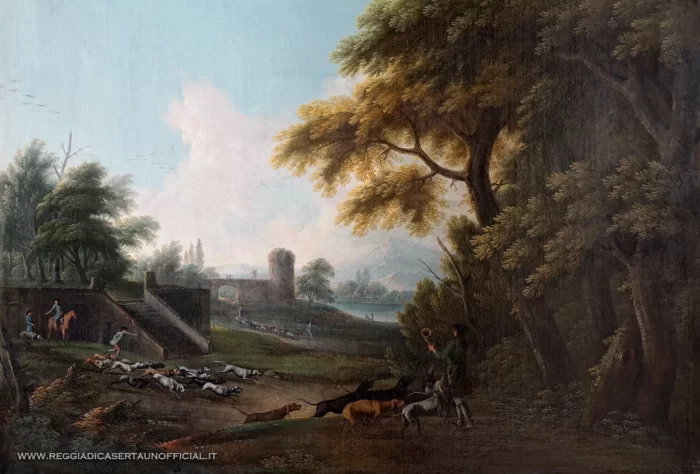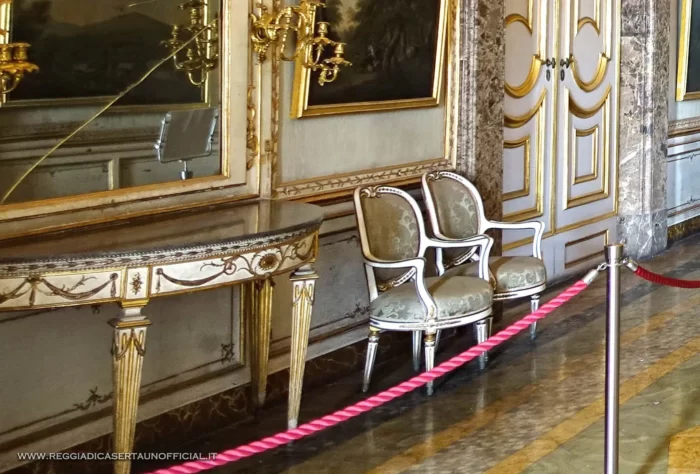Room of the Ladies of the Palace of Caserta
The Room of the Ladies in the Royal Palace of Caserta was the former Studio of Princess Maria Cristina. It contains works by Hackert, Fischetti, Pascale etc
Description
The Room of the Ladies is located in one of the corners of the Royal Palace of Caserta, and from here you can access the apartments facing east, now used as an art gallery and library, but which once formed part of the apartments of Princess Maria Cristina. In fact, this room was previously the study of Princess Maria Cristina but was later converted into a room for the ladies of the court. The environment has undergone major changes in the furnishings.
Decorations and furnishings of the Room of the Ladies
The fresco
The fresco in the Room of the Ladies of the Royal Palace of Caserta is made up of two parts created by two different artists:
Central area
Fresco by Fedele Fischetti representing the mythological scene of “The Aurora kidnapping Cephalus”. Aurora, goddess of dawn, fell in love with the handsome hunter Cefalo, kidnapped him while she was hunting and took him to Syria where they had a son. In the background Cefalo’s chariot pulled by cherubs. A late work by Fischetti, datable to around 1782, it reveals the artist’s mature style in which the composed formal harmony is combined with a refined colorism typical of the local tradition but also deriving from French suggestions.
Peripheral area
The clouds at the edges of the central fresco invade joining the rest of the fresco, the work of Filippo Pascale. This part of the fresco is divided into six parts and at the 4 corners there are vases of flowers. There is a large presence of grotesque decorations with griffins and putti, 4 medallions of different sizes, 2 of which are monochrome with putti and festoons above, and two other medallions that continue the decoration of the central fresco. On the short sides we find winged figures, and on the capital decorations we find herons
Paintings
Overdoors
The overdoors are paintings created by Domenico Mondo in 1781 and depict episodes from ancient history:
- “Queen Sofonisba imploring the victor Massinissa” to give her death rather than treat her as spoils of war;
- “The widow asking for justice from the Roman emperor Trajan”;
- “Rossane presented to Alexander the Great” of which she will become the bride;
- “Cleopatra who decides to commit suicide”;
- “Cornelia the mother of the Gracchi”;
Over mirrors
the overmirrors are made of a canvas set in the white boiserie with gilded decorations created by Gennaro di Fiore. They represent:
- “the Allegory of Time and Prudence” (Time, the old man, and Prudence holding the typical attributes of this
allegorical subject: the mirror and the snake) - “The Allegory of Justice and Peace”.
There are ten paintings by Jacob Philippe Hackert and Michele Foschini, reproducing Hunts and Peaches at the time of King Charles of Bourbon.

The painting of “the Allegory of Time and Prudence”
Furnishings
The environment has, over time, undergone major changes in the furnishings. The boiserie decorations in the Hall were made by Gennaro Fiore, and are covered in San Leucio silk.
At the moment in the hall we find:
- rococo-style gilded bronze candelabra on the wall;
- Semicircular console in neoclassical style in white painted wood with gilded carvings and four fluted inverted pyramid-shaped legs.
- White and gold armchairs in neoclassical style
- In 1799 there must also have been 2 chests of drawers “of foreign wood with brass trimming with rouge marble stone” (probably those now in the Cabinet of Queen Maria Carolina).
External link
